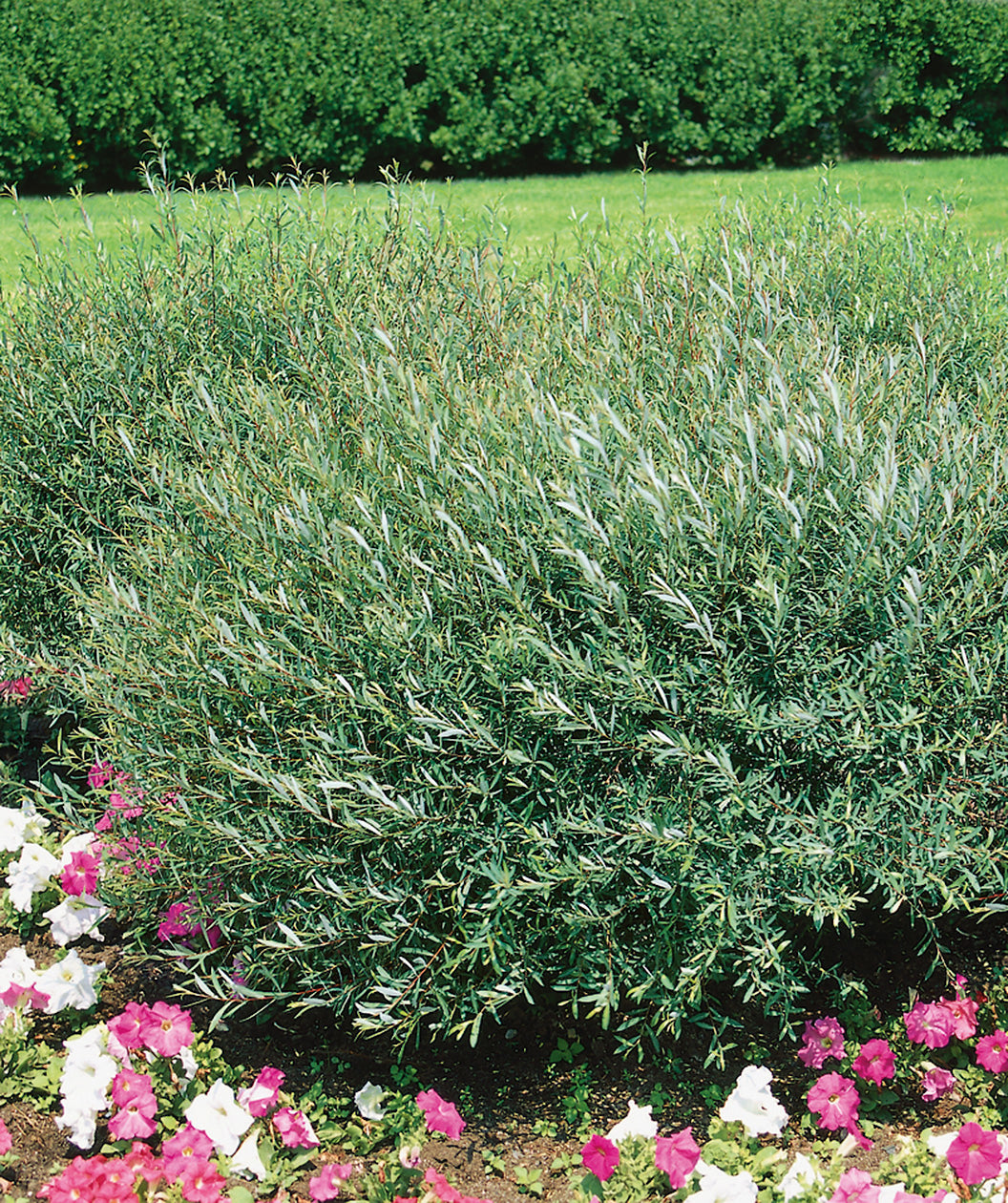

FINE-TEXTURED SILVERY-BLUE FLASHY FOLIAGE
FEATURES:
- In spring and summer, stems turn red and leaves are silvery-blue
- Gives off wispy appearance
- Leaves will dance and sparkle in the wind
- Popular for the use of a hedge
- Very easy to care for
-
Hand Selected, Fresh from the Grower
- Ships in a plant-safe designed box
Photo Credit: ©Nova-Photo-Graphik GmbH® Dwarf Arctic Willow
Growth Facts
- Hardiness Zone: 3-7
- Mature Height: 4-6' tall
- Mature Width: 4-6' wide
- Exposure: Full Sun
- Spacing: 2-4' apart
FINE-TEXTURED SILVERY-BLUE FLASHY FOLIAGE
FEATURES:
- In spring and summer, stems turn red and leaves are silvery-blue
- Gives off wispy appearance
- Leaves will dance and sparkle in the wind
- Popular for the use of a hedge
- Very easy to care for
-
Hand Selected, Fresh from the Grower
- Ships in a plant-safe designed box
Photo Credit: ©Nova-Photo-Graphik GmbH® Dwarf Arctic Willow
Growth Facts
- Hardiness Zone: 3-7
- Mature Height: 4-6' tall
- Mature Width: 4-6' wide
- Exposure: Full Sun
- Spacing: 2-4' apart
Why plant Dwarf Arctic Willow?
The Dwarf Arctic Willow is one of our favorite shrubs to plant in spaces with access to lots of water. Willow plants are considered water-lovers and are perfect for planting in tougher conditions. In the spring and summer you will be greeted with freshly red stems that hold fine-textured leaves that have dual-colors of blue and silver. When the breeze dances between the leaves, its wispy appearance will give a kinetic movement look in your own backyard. You’ll love seeing these beautifully colored leaves dance and sparkle from your windows.
Also known as ‘Nana.’ The Dwarf Arctic Willow was developed in the 1900s in Europe.
How to use Dwarf Arctic Willow in the landscape?
Dwarf Arctic Willow is naturally adapted to soggy soil. It is just the thing to plant in that low spot of your yard that doesn’t drain well, near a downspout, or next to a pond or other water feature. But it is just fine for regular soil, too. Once established, this adaptable Willow will tolerate moderate dry spells without complaint.
Planting Zones
Hardiness Zone: 3-7
How To Plant Dwarf Arctic Willow
The Dwarf Arctic Willow is easy to grow in most cool-climate areas. It really hates high heat and humidity, so homeowners in the Southeast will want to pass this one up (it is called “Arctic” for a reason). Brutal winters are no problem—this tree can survive temperatures to 40 below zero! Give Dwarf Arctic Willow a sunny site in moist soil if possible. A drier site will do if regular water is provided during the first year or two to encourage strong root development. Mulch well with wood chips or other organic matter to help conserve moisture and keep the root zone cool.
How To Water
Willow trees will appreciate watering deeply, and regularly during its first few years in the ground. Irrigate weekly, and especially during long dry spells or extreme heat after it’s established.
How To Fertilize
Feed your Dwarf Arctic Willow in the springtime. We recommend using our Elements Starter Plant Food in granular form for that extra springtime boost.
How To Prune
Light pruning of the Dwarf Arctic Willow can happen any time of the year. For a more vigorous trim, this should take place in the spring or fall. Prune back one-third of old branches to the ground. This will help your plant prepare for new growth.




